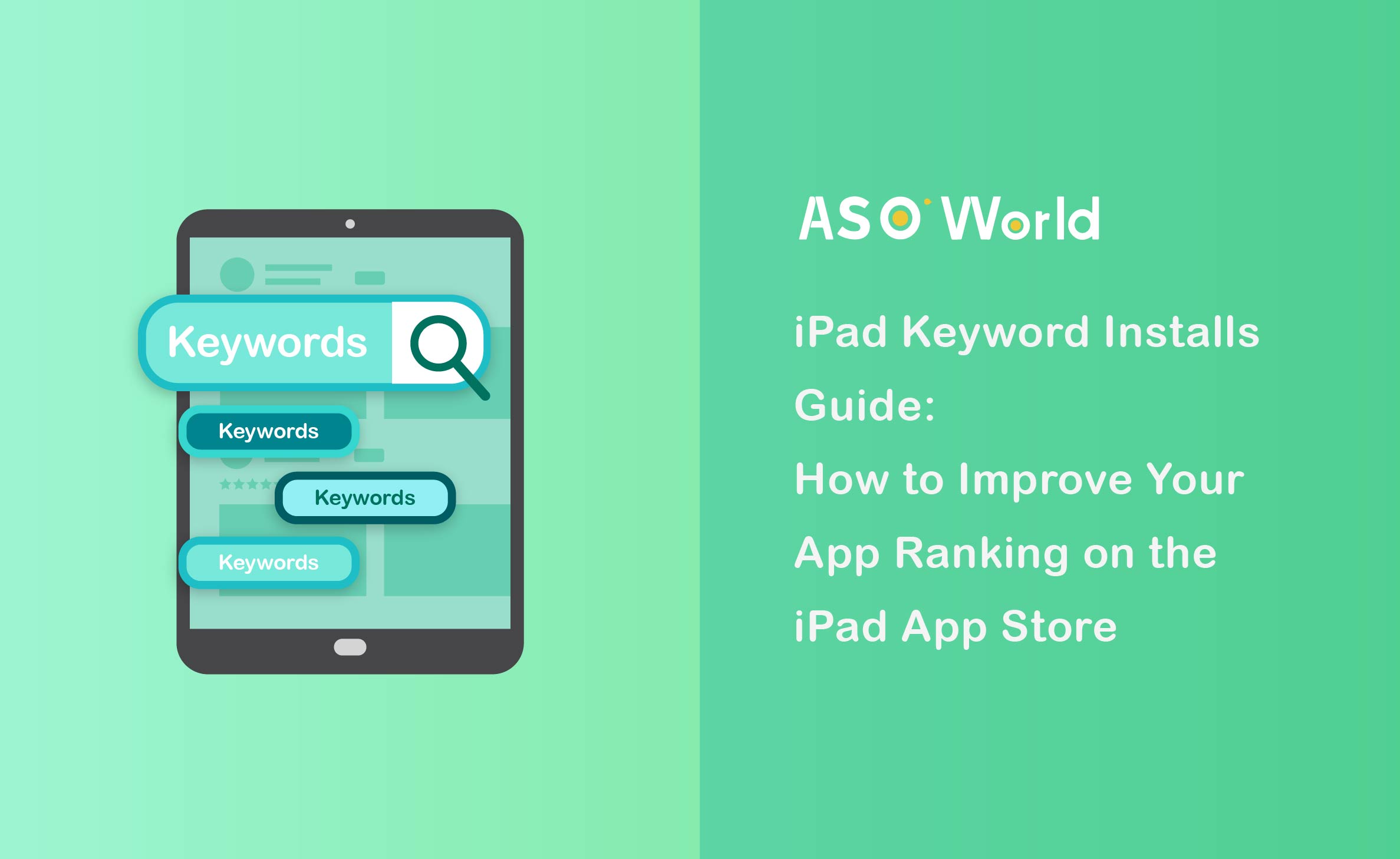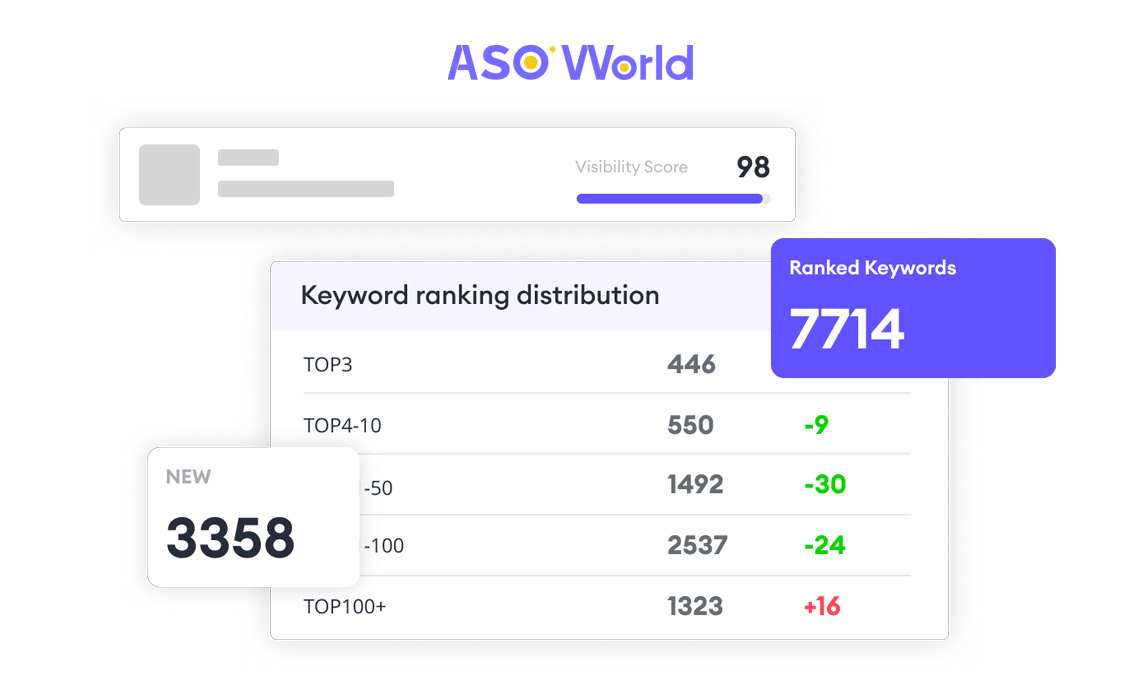






Most ASO effort goes into the iPhone marketplace, which makes sense given its scale. But the iPad App Store behaves differently: fewer searches, lighter competition and faster ranking responses. Those differences create a practical, cost-efficient route to visibility that many teams overlook.
This article explains what iPad keyword installs are, why they frequently outperform the same effort on iPhone, and how to run pragmatic campaigns that produce measurable ranking gains — with actionable expert tips you can apply today.
Although your app listing is shared across devices, Apple treats iPad search and ranking as a distinct environment. That separation means an app can perform very differently on iPad versus iPhone — and those differences are exploitable when you plan deliberately.
|
Factor |
iPhone App Store |
iPad App Store |
|
Competition level |
Very high — many apps and heavy paid activity |
Moderate to low — many apps under-optimized for iPad |
|
Installs required to reach Top 10 |
Often thousands for mid/high-volume keywords |
Often hundreds (or fewer) for comparable keywords |
|
Ranking volatility |
High — needs ongoing maintenance |
Lower — rankings are generally more stable |
|
Keyword opportunity |
Highly saturated for valuable terms |
Many neglected, high-opportunity niche keywords |
|
Cost efficiency |
More expensive per ranking movement |
Typically much more affordable |
iPad keyword installs are organic-looking downloads that originate from users who search for a particular keyword on an iPad and then install the app from the search results. Because these installs are directly tied to search behavior, Apple’s algorithm treats them as strong relevance signals for the searched keyword — which is exactly the behaviour you want to nudge.
👉 App Store Keyword Installs 101: Why & How to Boost Your App’s Organic Traffic
We run dedicated iPad keyword audits (not just device-agnostic research). Focus areas: mid-volume and relevant long-tail keywords, low-competition clusters, and phrases where competitors haven’t tailored assets for tablet users. Prioritise 5–15 target keywords for the first phase.
👉 ASO Keywords Ranking Tools: A Comprehensive Guide to Boost Your App Visibility & Ranking
Although title/subtitle/keyword fields are shared, visual and textual assets can and should speak to iPad users: include iPad screenshots, app previews showing tablet UI, and description copy that highlights tablet-optimised features. Small changes to the gallery and metadata increase conversion once users land from keyword searches.
We run controlled campaigns that drive real iPad users to search and install for a specific keyword (1–3 keywords at a time). Campaigns are measured and limited to avoid volatility: short pilots first, then scale the winning keywords. Typical iPad movement is visible within days.

Daily rank monitoring, install-to-rank correlation, and retention checks are essential. If installs don’t translate to retention or positive reviews, the ranking gain is short-lived—so we monitor post-install engagement and iterate on both UA and product quality.
After securing Top-10 positions for initial targets, expand into adjacent keyword groups to build a durable keyword net. Maintain a cadence of small campaigns rather than one-off spikes to keep rankings stable.
An educational app found “kids tablet learning” competitive on iPhone and stuck outside the Top 50. On iPad the same keyword showed weak optimization among competitors. A focused campaign of ~350 iPad search installs over 10 days moved the app into the Top 10 for that keyword, producing a steady stream of organic tablet installs and several high-quality reviews — and a measurable uplift in overall discovery that helped downstream iPhone visibility.
👉 View the complete success process of the educational app case.
The iPad App Store is a practical, underused channel for driving discoverability. Thoughtfully planned iPad keyword install campaigns — combined with tailored listing assets and measurement discipline — deliver outsized ranking gains for relatively modest effort and cost.
If you’d like a short, non-sales audit of your app’s iPad keyword opportunity, ASOWorld can prepare that for your team.
Our aim is to help you test the strategy quickly and learn whether iPad can become a reliable growth channel for your app — with clear, data-driven next steps rather than guesswork.
Get a good start for your app optimization with practical ASO guideline!
Want to get the latest Guides & Insights from ASOWorld?
Related posts